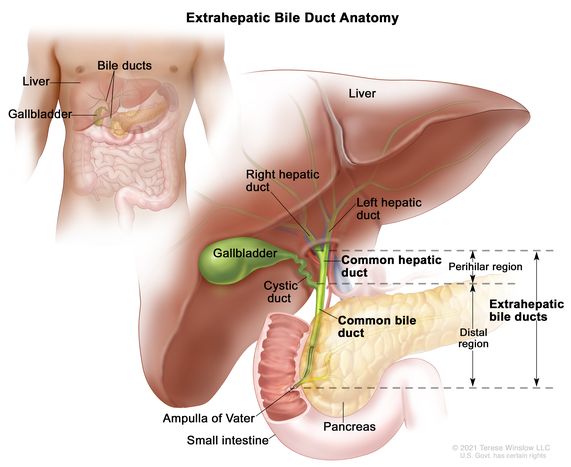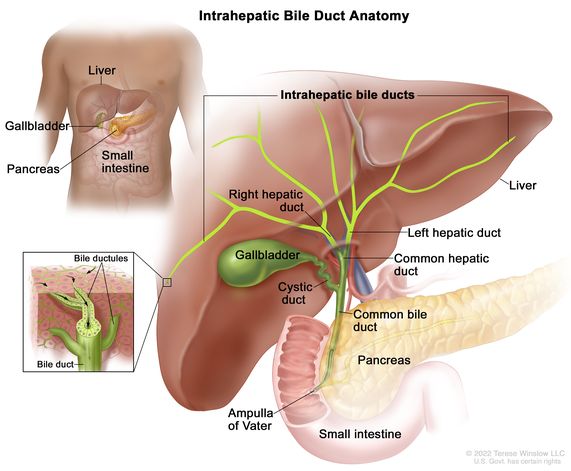bile duct
(bile dukt)
A tube through which bile passes in and out of the liver.
More Information
 Enlarge this image in new window
Enlarge this image in new windowAnatomy of the extrahepatic bile ducts. Extrahepatic bile ducts are small tubes that carry bile from the liver and gallbladder to the small intestine. They are made up of the common hepatic duct (perihilar region) and the common bile duct (distal region). Bile is made in the liver and flows through the common hepatic duct and the cystic duct to the gallbladder, where it is stored. When food is being digested, bile is released from the gallbladder and flows through the common bile duct, pancreas, and ampulla of Vater into the small intestine.
 Enlarge this image in new window
Enlarge this image in new windowAnatomy of the intrahepatic bile ducts. Intrahepatic bile ducts are a network of small tubes that carry bile inside the liver. The smallest ducts, called ductules, come together to form the right and left hepatic ducts, which lead out of the liver. The two ducts join outside the liver and form the common hepatic duct. The cystic duct from the gallbladder joins the common hepatic duct to form the common bile duct. The common bile duct passes through the pancreas and ends in the small intestine. Bile is made by the liver and stored in the gallbladder. When food is being digested, bile is released from the gallbladder and passes through the common bile duct, pancreas, and ampulla of Vater into the small intestine.